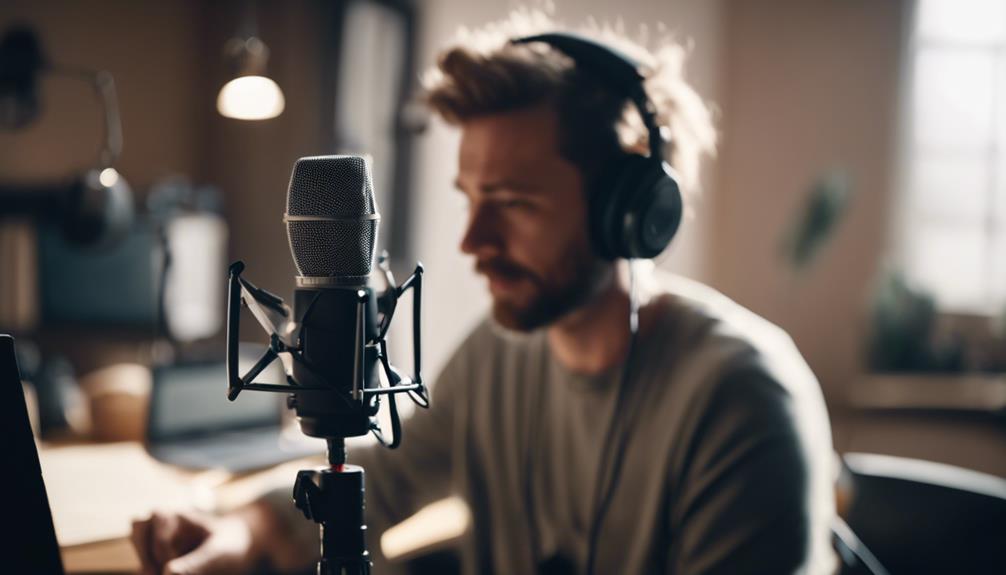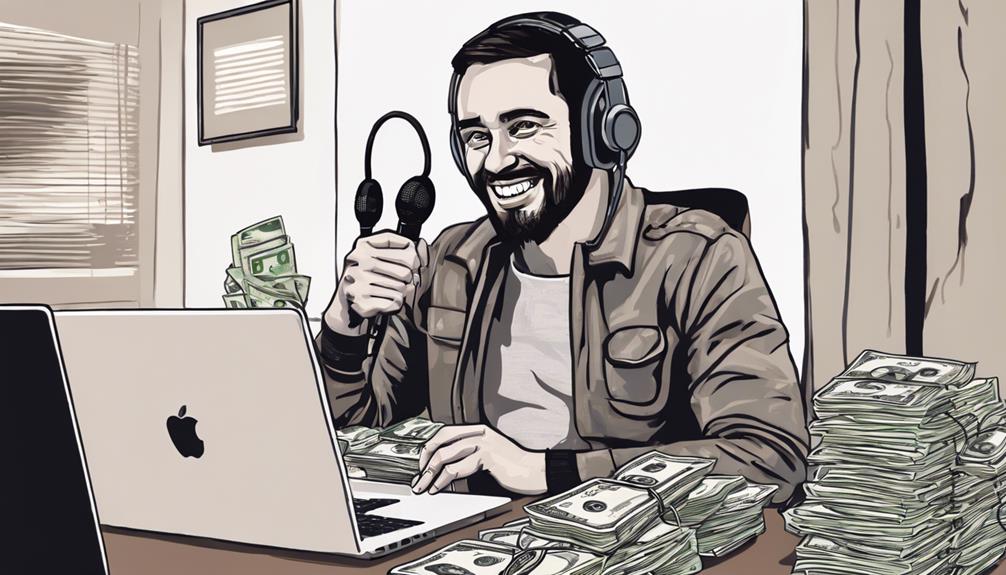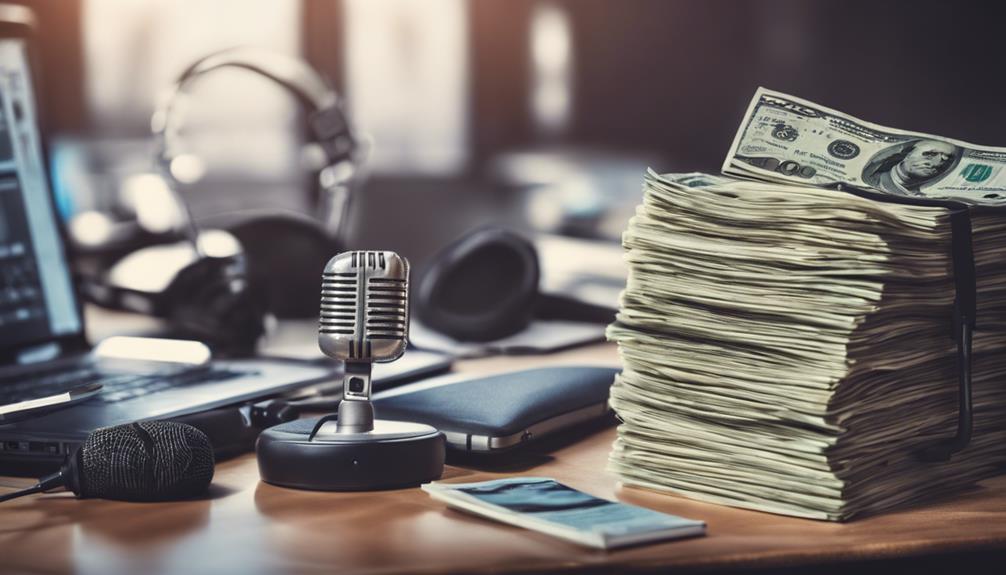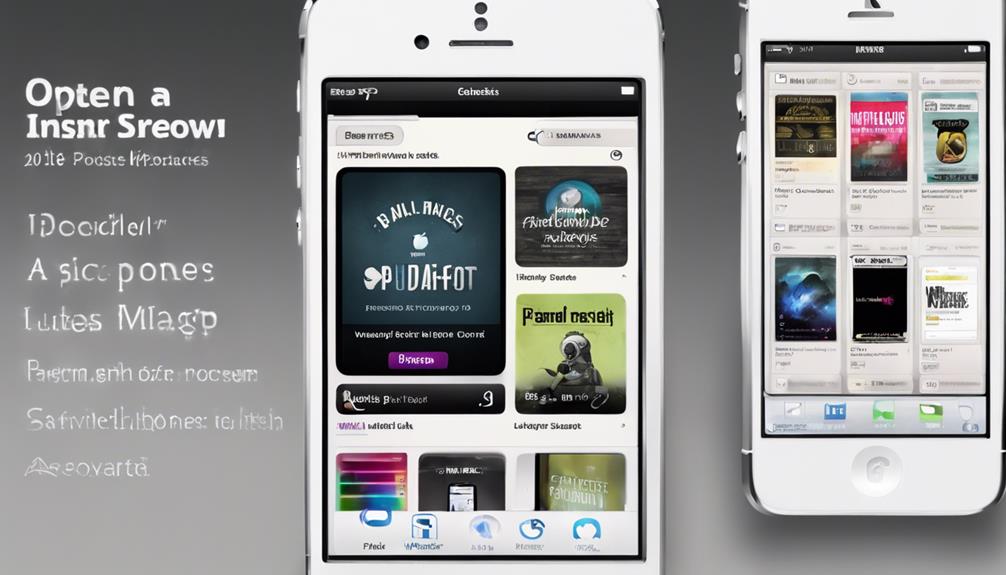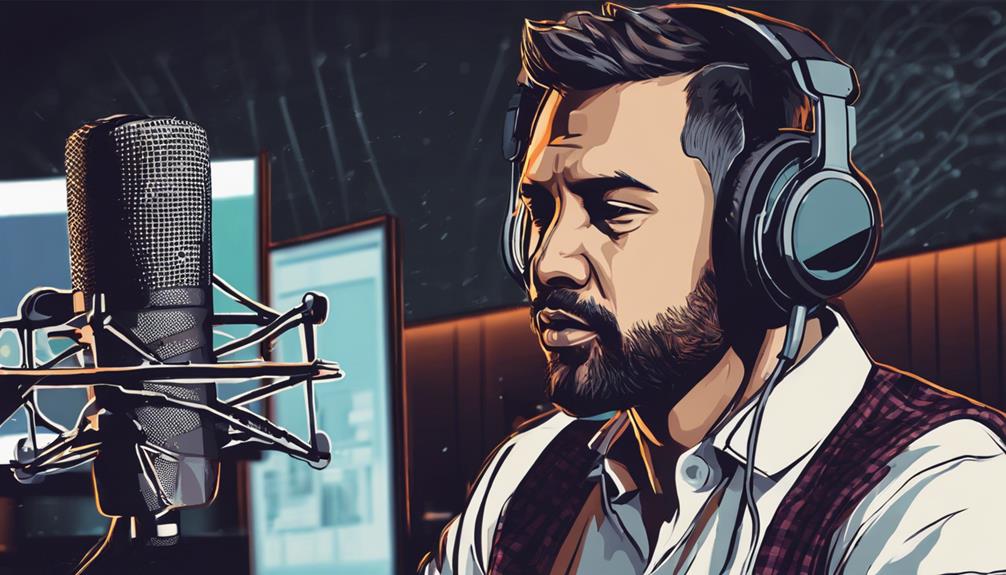Video podcasting blends audio with visuals, like images and videos, to create engaging content on platforms such as YouTube and Vimeo. This process involves recording, editing, and sharing your podcast. Visual elements deepen audience connections, improve social media performance, and cater to a wider audience. Formats include images, interviews, in-studio recordings, and animations. Quality gear like microphones and cameras is essential. Editing with tools like Adobe Premiere Pro enhances the podcast. Use color correction to elevate visual appeal. Platforms like YouTube and Vimeo host video podcasts, while social media aids in promotion and engagement with viewers. Discover more about video podcasting's benefits.
Key Takeaways
- Video podcasting combines audio content with visual elements for an enhanced viewing experience.
- It involves recording audio, capturing video footage, editing, and publishing on platforms like YouTube.
- Visual elements deepen audience connections, improve engagement, and perform well on social media.
- Various formats include static images, remote interviews, in-studio recordings, and animation.
- Quality equipment, editing software, and attention to detail are essential for creating compelling video podcasts.
Definition of Video Podcasting
What exactly distinguishes video podcasting from traditional audio-only podcasts?
Video podcasting combines the engaging audio content of podcasts with a visual element, elevating the overall listening experience. By incorporating static images, video recordings of hosts and guests, or even animations, video podcasts add depth and richness to the content.
This visual component not only deepens the connection with the audience but also offers additional value, catering to visual learners who prefer a more interactive format.
When setting up a video podcast, platforms like YouTube, Vimeo, and podcast websites are commonly used for hosting, allowing for a wider reach and accessibility.
The process of creating video podcasts involves recording audio, capturing video footage, editing the content together seamlessly, and finally publishing it for viewers to enjoy.
The result is a more personal, interactive, and visually stimulating experience that sets video podcasts apart from their audio-only counterparts.
Key Differences From Audio Podcasts
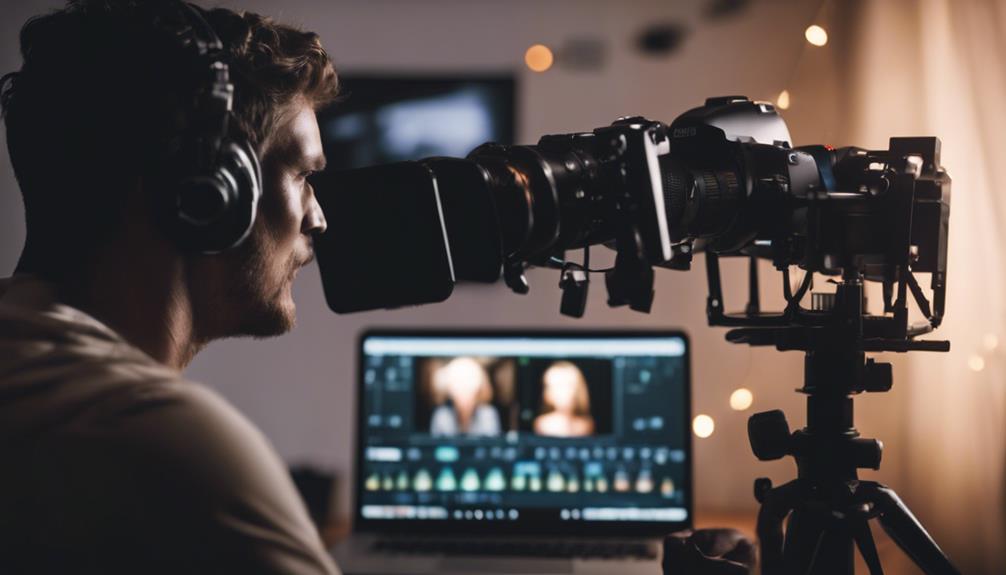
Moving from the definition of video podcasting, a key distinction from traditional audio-only podcasts lies in the incorporation of visual elements that enhance the overall viewing experience. Video podcasts combine audio content with visual elements, offering a more immersive and engaging experience for the audience.
The visual cues in video podcasts deepen audience connections and help build trust with viewers. Due to their shareable and visually appealing nature, video podcasts often perform better on social media platforms, attracting a broader audience.
By adding video elements, content delivery is enhanced, providing an engaging experience that goes beyond just audio. This immersive experience not only captivates viewers but also creates a more interactive and dynamic platform for podcast hosts to share their content.
The blend of audio and visual elements in video podcasts creates a unique and compelling medium that's reshaping the podcasting landscape.
Advantages of Video Podcasting
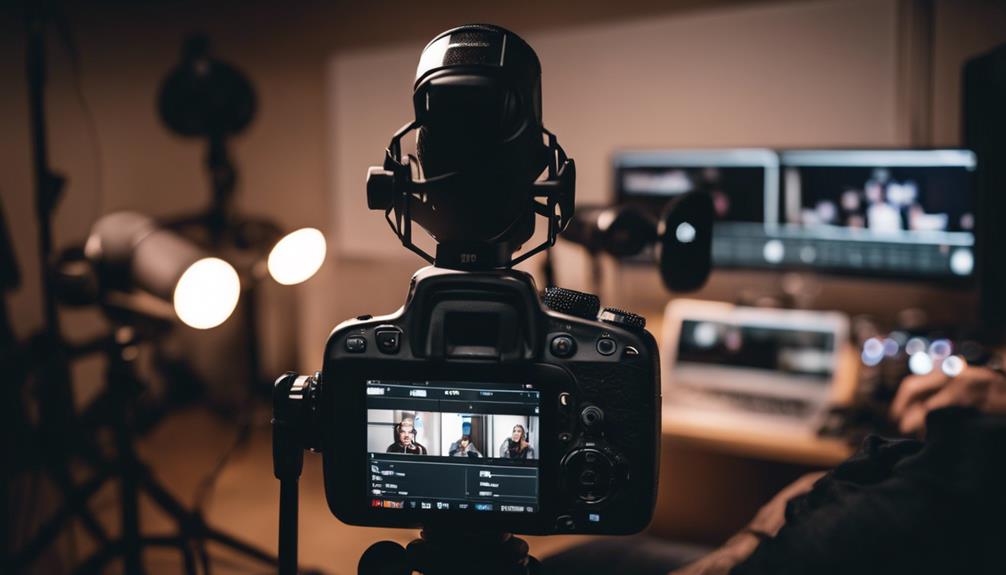
Video podcasting presents a multitude of benefits that stem from its incorporation of visual elements, enhancing audience engagement and expanding reach on various platforms.
With video podcasts, audiences can form deeper connections due to the higher engagement levels facilitated by visual content. The use of visual elements not only makes the content more shareable on social media but also enhances authenticity and trust-building with viewers.
Compared to audio-only formats, video podcasts cater to a broader audience, leading to increased engagement. Additionally, repurposing video podcast content allows for wider reach and growth potential across various platforms.
These advantages highlight the unique strengths of video podcasting in creating compelling and interactive content that resonates with audiences, ultimately driving engagement and fostering a sense of connection with viewers.
Various Video Podcast Formats
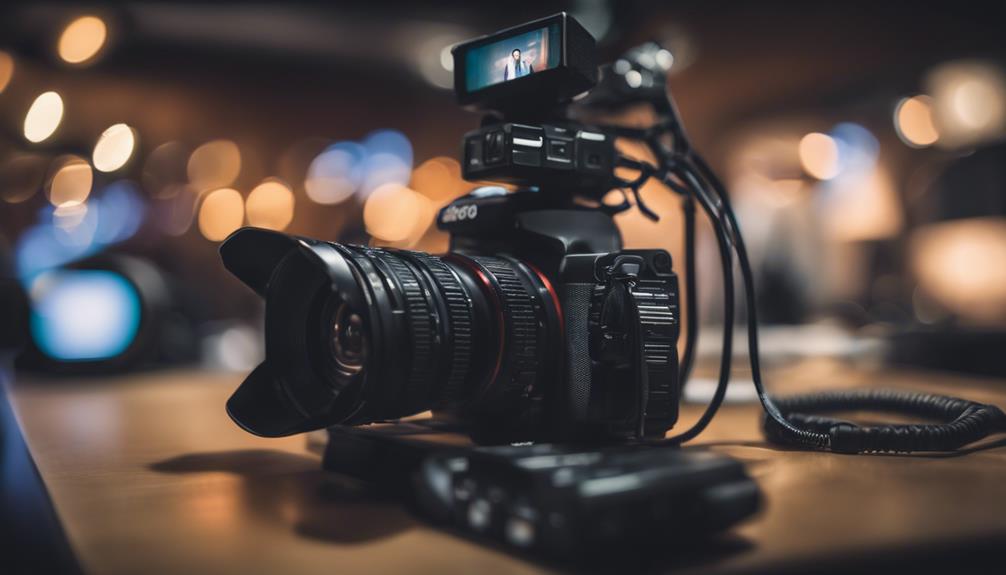
Exploring different formats for video podcasting opens up a world of creative possibilities for engaging with audiences in unique ways. When considering video podcast formats, there are several options to choose from, each offering its own benefits and challenges. Here is a breakdown of various video podcast formats:
| Video Podcast Formats | Description | Key Features |
|---|---|---|
| Static Image Format | Utilizes simple video editing software and can be enhanced with captions or waveforms for dynamics. | Easy to create and add visual enhancements. |
| Remote Interview Recordings | Conducted using platforms like Zoom, suitable for when in-person recording is not possible. | Convenient and easy for remote conversations. |
| In-Studio Recording | Captures the energy of in-person conversations, requiring camera setup and potential higher costs. | Provides a dynamic and professional feel. |
| Interview & B-roll Recording | Engaging format with additional footage like B-roll, involves extensive post-production work. | Enhances viewer engagement with extra visuals. |
| Animation Format | Time-consuming, requires drawing software or a professional animator for complex animations. | Offers unique and visually appealing content. |
Each format offers a distinct way to create engaging content for your video podcast, catering to different styles and preferences.
Steps to Create a Video Podcast
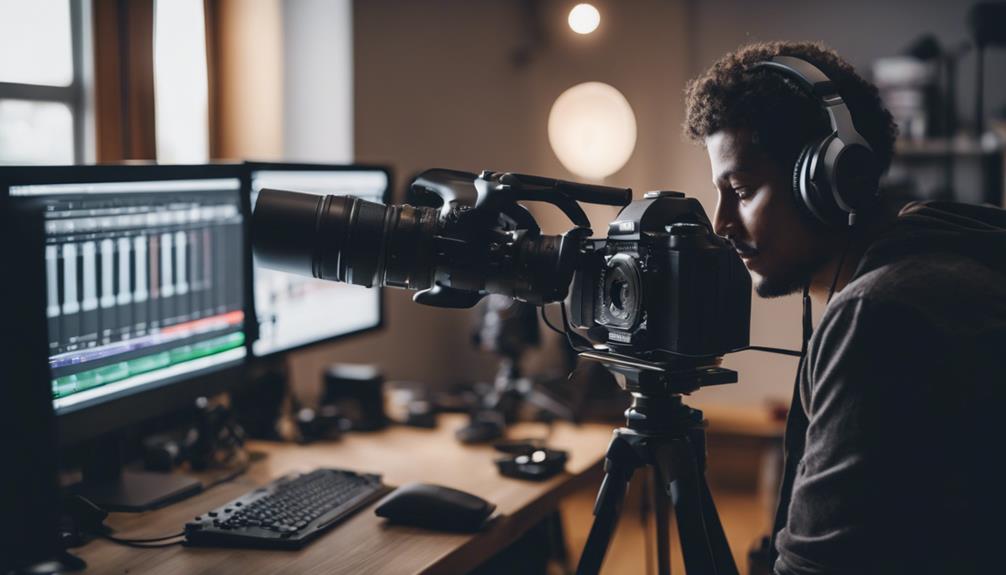
Planning and selecting the appropriate format are crucial initial steps in creating a compelling video podcast. When you start, define your topics, audience, and style to make engaging video podcast episodes.
Invest in quality equipment like microphones, cameras, and lighting to enhance the recording process for top-notch audio and video quality. Guarantee a structured recording process in a well-lit, quiet environment for clear communication and engaging content delivery.
Utilize video editing software to add video elements, arrange clips, and polish your episodes with intros, outros, music, and fun edits. Consider conducting remote interviews to enrich your content.
Once your episode is ready, publish your video podcast on platforms like YouTube, Vimeo, and social media to reach a wider audience. Promote your video podcast to engage with viewers, gather feedback, and foster interactions for a successful podcasting journey.
Equipment Needed for Video Podcasting
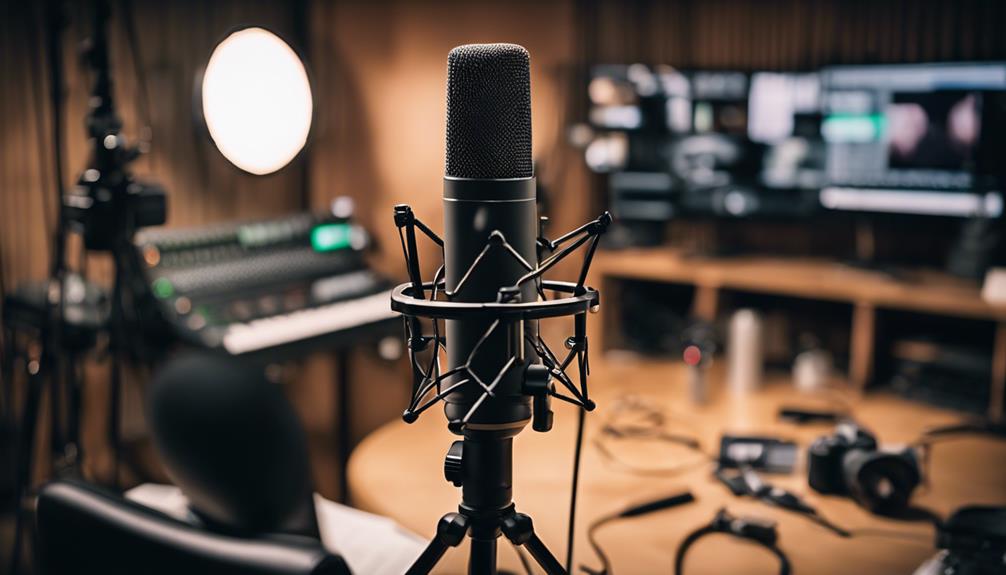
To create a successful video podcast, investing in quality equipment is essential. This includes a reliable microphone, high-quality camera, proper lighting setup, and editing software.
A quality microphone guarantees clear audio recording, capturing your voice with precision. This is crucial for ensuring that your content is easily understandable and engaging.
A high-quality camera or webcam is necessary for effectively capturing video content. It helps in maintaining a professional appearance and delivering visually appealing videos to your audience.
Implementing a proper lighting setup is important for ensuring good video quality in your podcast recordings. It enhances the visual appeal of your content and helps in creating a professional look for your videos.
Additionally, reliable recording and editing software play an important role in producing and editing video podcasts. They allow you to create polished episodes and make the editing process smoother and more efficient.
Post-production editing tools further enhance the overall quality of your videos. They provide the finishing touches that make your podcast stand out and help in creating a unique and engaging viewing experience.
Editing and Designing a Video Podcast
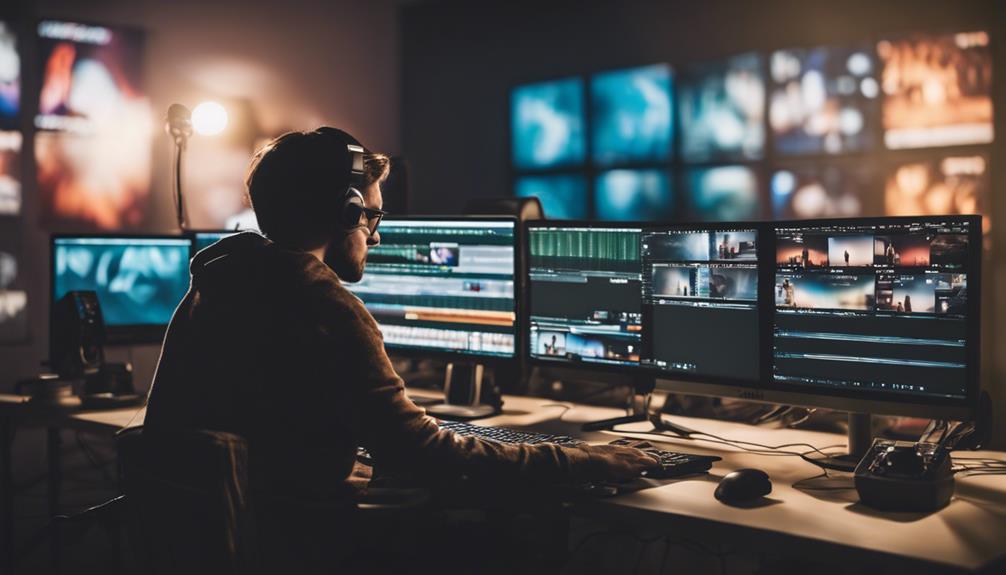
When it comes to editing and designing a video podcast, attention to detail is key for a professional outcome.
We can enhance visual aesthetics by implementing effective design choices and utilizing editing software recommendations.
These tips will help elevate the quality and viewer experience of our video podcast.
Visual Aesthetics Tips
Enhancing visual aesthetics in a video podcast involves utilizing editing software tools like Adobe Premiere Pro and Final Cut Pro. Designing custom thumbnails and engaging graphics can attract viewers and improve click-through rates.
Adding fades, overlays, and lower thirds can enhance the overall visual appeal of a video podcast. Consistent branding elements like color schemes and fonts create a cohesive visual identity for the video podcast.
Utilizing color correction and color grading techniques can improve the overall look and feel of the video podcast content. By incorporating these tips, you can create visually appealing video podcasts that captivate your audience and leave a lasting impression.
Experimenting with different design elements and techniques can help elevate the quality and professionalism of your video content.
Editing Software Recommendations
Exploring various editing software options can greatly impact the quality and visual appeal of a video podcast production. When it comes to creating engaging content, here are some top recommendations for video editing tools:
- Adobe Premiere Pro: A professional choice for its robust features and flexibility.
- Final Cut Pro X: Known for its user-friendly interface and powerful editing capabilities.
- DaVinci Resolve: Ideal for advanced color correction and enhancing visual quality.
- Camtasia: Beginner-friendly software with essential tools for crafting compelling video podcasts.
Consider these options to elevate your video podcasting experience and deliver captivating content to your audience. Whether you're a seasoned editor or just starting out, the right editing software can make a significant difference in the final product.
Platforms for Hosting Video Podcasts
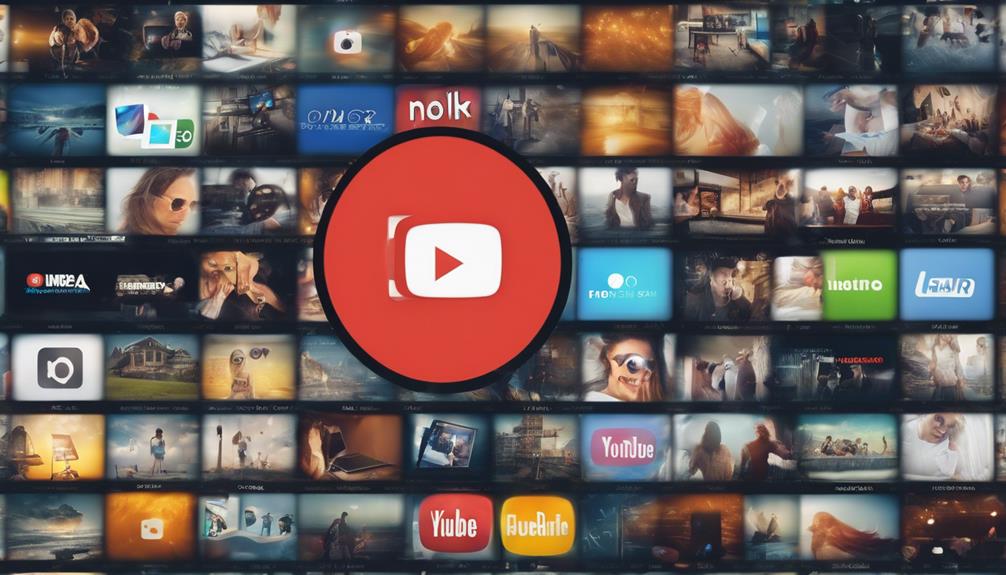
Selecting the appropriate platform for hosting video podcasts is essential for maximizing audience reach and engagement. When considering platforms for video podcasting, options like YouTube, Vimeo, Libsyn, Podbean, Buzzsprout, and Anchor offer unique features catering to different needs. Here's a comparison of some popular hosting platforms:
| Platform | Key Features | Benefits |
|---|---|---|
| YouTube | Wide reach, high engagement | Free, established audience |
| Vimeo | Professional, customizable | Analytics, sleek interface |
| Libsyn | Support for audio and video | Reliable, podcast-focused |
| Podbean | Catering to visual creators | User-friendly, hosting options |
| Buzzsprout | Seamless integration | Distribution tools, ease of use |
| Anchor | Free hosting, monetization | Diverse audience, simple setup |
Each platform offers distinct advantages, from tailored analytics to ease of use and monetization options. Depending on your goals and audience, choosing the right platform can greatly impact the success of your video podcast.
Promoting Your Video Podcast
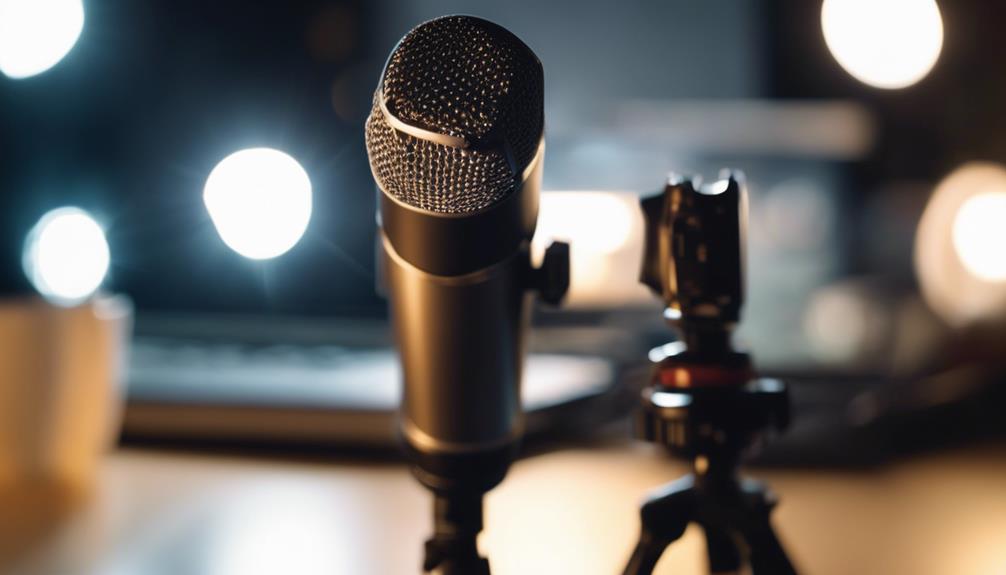
When promoting your video podcast, remember to leverage social media platforms like Instagram, Twitter, and Facebook to reach a wider audience.
Creating teaser clips or trailers can pique viewers' interest and draw them to your podcast episodes.
Collaborating with influencers in your niche can also help expand your video podcast's reach and attract new followers.
Social Media Promotion
Promote your video podcast effectively by leveraging social media platforms to engage with a broader audience and boost visibility. Here are some innovative ways to enhance your social media promotion:
- Create enticing teaser clips to generate interest and curiosity.
- Use relevant hashtags to increase discoverability and attract more viewers.
- Collaborate with influencers for cross-promotion to reach new audiences.
- Engage with your audience actively by responding to comments and messages to foster a sense of community.
Collaborate With Influencers
Collaborating with influencers can greatly enhance the promotion of your video podcast by tapping into their existing audience and leveraging their credibility and endorsement.
By partnering with influencers, you can expand the reach of your content, gaining visibility and brand recognition.
Their expertise can attract new viewers who are interested in the topics covered in your video podcast.
Additionally, collaborating with influencers opens up cross-promotion opportunities, driving more traffic to your podcast.
The credibility and endorsement influencers bring to the table can greatly boost your brand's reputation and attract a wider audience.
Leveraging these partnerships effectively can help attract viewers and establish your video podcast in the competitive digital landscape.
Maximizing Engagement With Video Podcasts
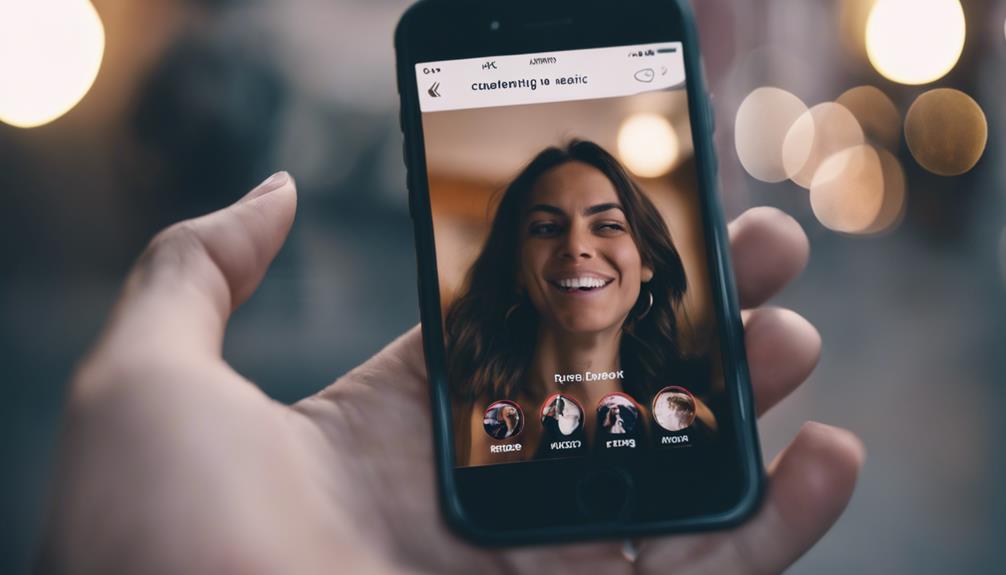
To enhance viewer engagement with video podcasts, incorporating visually appealing elements alongside audio content is key. When aiming to maximize engagement with video podcasts, consider the following strategies:
- Utilize engaging visuals: Incorporate alluring graphics, animations, and dynamic visuals to keep viewers interested and create a memorable experience.
- Leverage interactive features: Encourage viewer engagement by including interactive elements such as polls, quizzes, or clickable links within the video podcast.
- Optimize for social media: Tailor your video podcast for different social media platforms to increase shareability and reach a wider audience.
- Create an immersive experience: Make use of storytelling techniques, varied camera angles, and background music to immerse viewers in the content and enhance the overall viewer engagement.
Frequently Asked Questions
What Is the Purpose of a Video Podcast?
The purpose of a video podcast is to provide a more engaging and immersive experience for viewers. By combining audio content with visual elements like facial expressions and gestures, video podcasts aim to deepen connections with the audience.
They attract new viewers who prefer video content, expanding the podcast's reach. Additionally, the visual presence of hosts and guests helps build trust and authenticity, creating a multi-sensory experience that caters to diverse audience preferences.
How Do I Do a Video Podcast?
To do a video podcast, we gather quality equipment like microphones, cameras, and lighting. Planning and scripting episodes are vital for engaging content.
Editing software refines footage with effects and enhancements. Promote on platforms like YouTube for wider reach.
Incorporating audio with visuals enhances audience connection.
What Does Podcast Mean With Video?
When we mention 'podcast with video,' it implies adding a visual component to traditional audio content. This integration elevates the overall experience, offering viewers a more engaging and immersive way to consume the podcast.
Are Video Podcasts Still a Thing?
Yes, video podcasts are still a thing! In a world where online video content reigns supreme, platforms like YouTube and Twitch are buzzing with a variety of engaging video podcasts.
Many popular podcasts have jumped on the video bandwagon to reach wider audiences, offering an immersive experience.
The landscape of video podcasting continues to evolve, adapting new formats to cater to diverse preferences and keeping viewers hooked.
Conclusion
To sum up, video podcasting is like a vibrant tapestry of storytelling, weaving together visuals and audio to create a mesmerizing experience for viewers.
By embracing this dynamic medium, content creators can paint a vivid picture that resonates with their audience and leaves a lasting impression.
So grab your camera, hit record, and start sharing your unique perspective with the world through the art of video podcasting.

